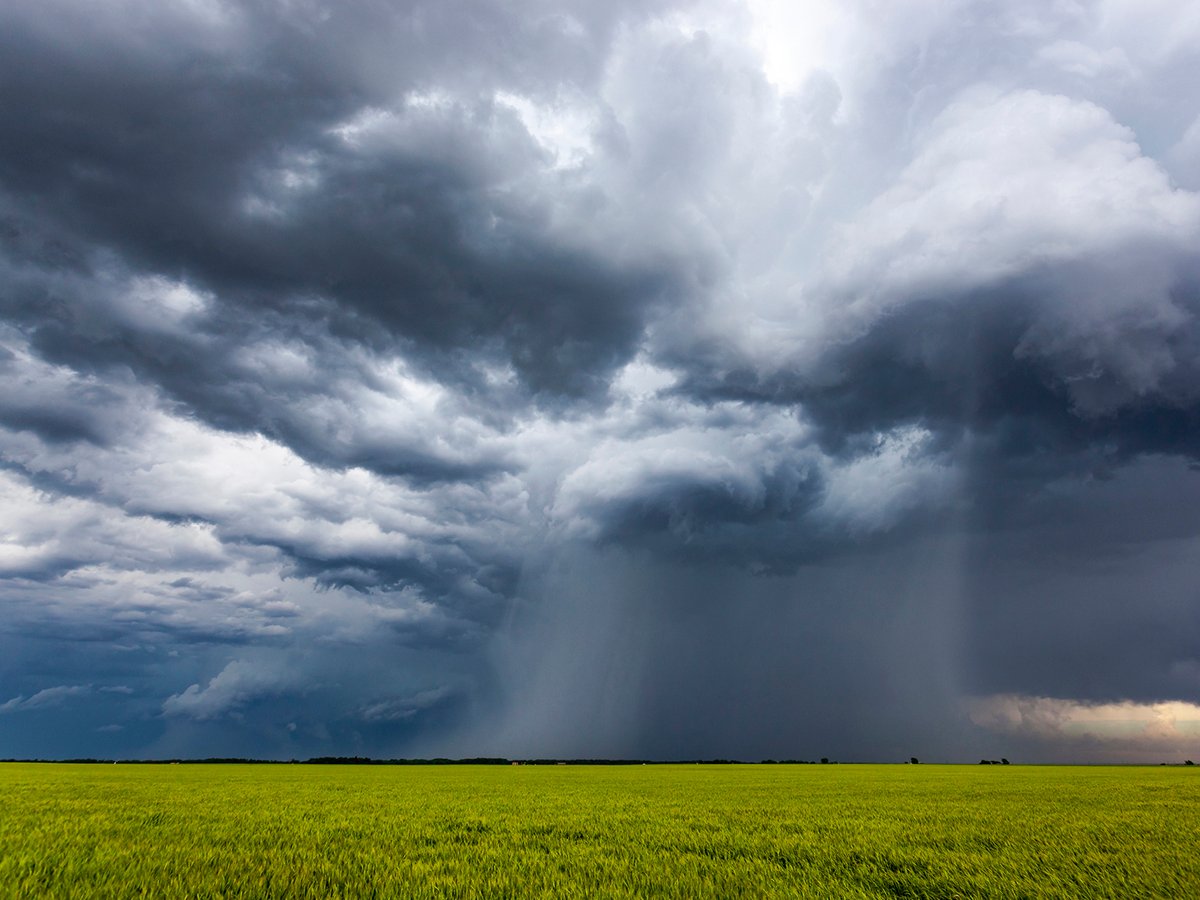WYNYARD, Sask. – The Bognor hockey team spent an hour shovelling snow off the ice before playing hockey there for two more hours.
When evening came, they would plant a hockey stick in the snowbank and hang a lantern on it to light their play.
“Temperature was not a problem; we’d play if it was Ð30 or if water was on the ice,” said Bill Wright of his teenaged years in the 1940s playing hockey on sloughs around this central Saskatchewan town.
“Whoever had ice made the hockey rink in the fall,” said Wright.
Read Also

Extreme rain increases as planet warms
In this issue, we are going to wrap up our look at extreme rainfall by examining the different weather patterns that tend to be associated with these rainfall events.
This past summer, the hockey club reunited for a meal and some memories at Wright’s farm near Wynyard.
“We loved the game and we had no choice,” said Wright of playing conditions. “It was the only way to participate in the game. We had to rough it.”
Kay Cottrill said they were all farm boys, used to being outdoors and doing chores around their farm homes.
He remembered starting to sweep the ice after lunch and playing until dusk.
The best nights were those with full moons lighting the ice surface, Cottrill said.
Their warm-up shack was an old cook car on wheels borrowed from threshing rigs. Outside, it was standing room only between shifts on the ice.
The players bought much of their gear and made up the rest. Newspapers were stuffed inside tall socks for padding against the blistering slapshots of their opponents from school districts such as Kandahar, Quinton and Dafoe, 20 kilometres away. They would arrive on horseback, by sleigh or covered cutters.
Snowbanks doubled for boards until they raised enough money by hosting a dance to build wooden ones. Stakes in the snowbanks served as the blue lines.
Skates were thin with little or no ankle support. A good pair might cost $10, while a stick could be purchased with a single dollar bill. Hats were more the norm than helmets.
“The skates had to be laced up so tight they almost cut the circulation off,” said Wright.
Nick Shular recalled using a stick that was once bolted to the wagon for the horse lines.
Cottrill remembered his knee-length hockey pants that had stick inserts for padding.
“It was better than nothing,” he said.
Nets were made from chicken wire, and scoop shovels doubled for goalie’s sticks, said Wright’s brother Russ, the only one “brave enough or stupid enough” to mind the net.
He remembered suiting up in something comparable to what catchers wear in baseball games.
“You felt just about every puck that hit you,” Russ said.
He remembered the good defensive play of teammates Doug Hagen, the “policeman and enforcer” who towered over fellow players Henry Norlin and Bernard Pruden.
In their hockey league, the spoils of victory in tournament play rarely included hardware.
“The trophy was winning,” said Bill Wright.
Some carried on with hockey, like Russ Wright, who coached in Foam Lake, and Hagen, who coached juvenile hockey for 14 years in Calgary.
Most were Toronto Maple Leaf fans and all attached their Bognor crests to their favourite blue and white hockey sweaters.
Hockey was a special highlight of the long winter on the farm.
Wright remembered the Foster Hewitt radio broadcasts of Leaf games and following his favourite players such as Syl Apps and the Bentley brothers.
Shular said Hewitt brought the game to small towns.
“You had an image of the game in your mind and Foster Hewitt made the game twice as good as it was,” he said.
For others, hockey offered up one of wintertime’s few recreations.
“There was no TV to watch,” said Pruden.
“And girls were pretty scarce,” added Hagen.
Bill Wright’s father refereed all the games, administered first aid and also supplied the “smokes” to the boys.
Wright recalled the fog of the cook shack during game breaks.
“The air got so thick in there it was hard to see from one end to the other. We’d be coughing and smoking,” said Norlin.
The games were capped with a hearty meal in the nearby farm home, allowing the boys time to wind down and warm up for the cold ride home.














